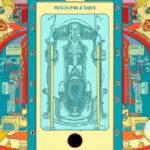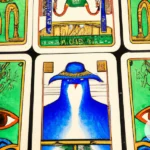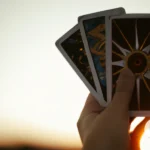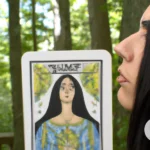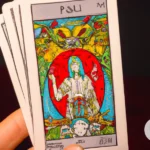Tarot cards have been a source of mystery and fascination for centuries. From the striking and intricate artwork to the deep symbolism imbued in each card, the tarot has captured the imaginations of people across cultures and time periods. However, the true meaning of the tarot goes beyond surface-level interpretations. In order to truly understand the tarot and its potential for personal growth and insight, one must look to the teachings of Jungian psychology. By exploring the relationship between tarot symbolism and the concepts of the collective unconscious and archetypes, we can unlock the full potential of the tarot as a tool for self-discovery and psychological insight. In this article, we will dive deep into the interpretation of tarot card combinations from a Jungian perspective, exploring the ways in which the tarot can be used to tap into our deepest emotions and guide us on our journey of self-discovery.
Understanding Tarot and Jungian Psychology
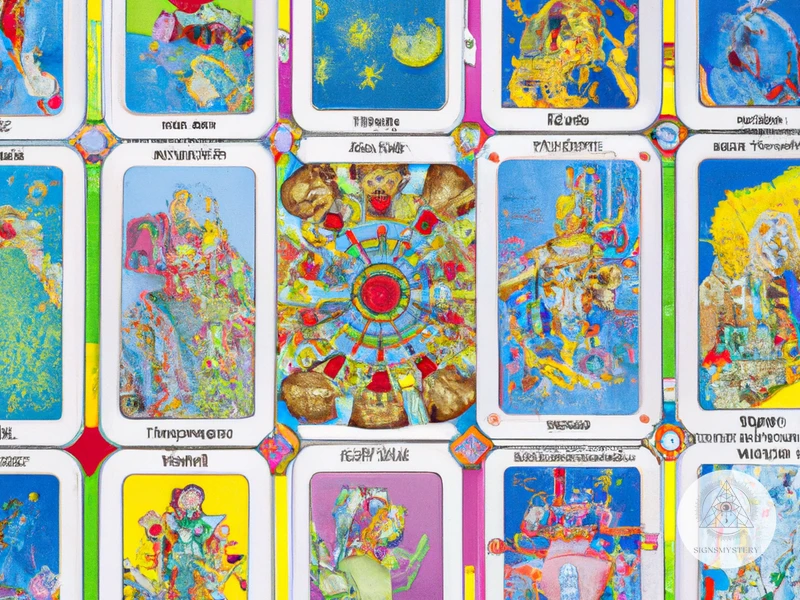
When it comes to understanding the tarot deck, there are many approaches to consider. One of the most intriguing is the Jungian perspective, which places a heavy emphasis on archetypes, symbols, and the collective unconscious. Carl Jung, a famous psychologist, believed that the tarot cards could be used as a tool for self-discovery and introspection. In this section, we’ll explore the connections between tarot and Jungian psychology, including the use of tarot archetypes and symbols as a means of tapping into the subconscious mind. To delve deeper into the topic, consider reading about the tarot archetypes in Jungian psychology or Carl Jung’s approach to tarot card readings.
Tarot and Symbolism
The Tarot is a deck of 78 cards that have rich symbolism and meaning attached to them. Each card depicts a different archetypal image, which represents certain situations, emotions, and experiences that the human psyche goes through. The symbols on the cards are a language of their own, and interpreting them requires a keen eye and an open mind. In Jungian psychology, symbols are considered to be a direct link to the Collective Unconscious, a realm of shared experience and knowledge that we all have access to.
Tarot and Symbolism
The Tarot is a system of symbols that offers deep insights into the human psyche. The images on the cards are not literal depictions of reality, but rather representations of the archetypes and universal experiences that we all go through as human beings. The symbols on the cards are a language of their own, and each one has a specific meaning and significance.
Some of the most commonly recognized symbols in the Tarot include:
- The Fool: represents new beginnings, naivety, and taking a leap of faith
- The Tower: represents chaos, destruction, and upheaval
- The Sun: represents success, happiness, and vitality
- The Moon: represents mystery, the unknown, and the unconscious mind
- The Hierophant: represents tradition, authority, and spirituality
By familiarizing oneself with the symbolism of the Tarot, one can begin to unlock the deeper messages and meanings that lie within the cards.
In Jungian psychology, symbols are believed to be a direct link to the Collective Unconscious, a realm of shared experiences and knowledge that exists beyond the individual psyche. The Tarot is a powerful tool for accessing this realm, as the symbols on the cards tap into universal experiences and emotions that we all share.
Understanding the symbolism of the Tarot is a key aspect of using it to gain insight and self-discovery. By examining the images and symbols on the cards, we can begin to understand our own unconscious minds and the archetypal struggles that we face in our daily lives. In doing so, we can unlock new levels of self-awareness and personal growth.
Learn more about the Tarot and the Collective Unconscious.
Jungian Psychology and the Tarot
In Jungian psychology, the tarot is often seen as a tool for self-discovery and exploration of the psyche. Jung believed that the archetypes and symbols represented in the tarot cards are universal and are present in the collective unconscious of all humans. The use of tarot cards can therefore aid in accessing and understanding the unconscious mind.
Carl Jung, the founder of analytical psychology, believed that the human psyche was composed of three parts: the conscious mind, the personal unconscious, and the collective unconscious. The personal unconscious consists of repressed or forgotten memories, while the collective unconscious is made up of shared and inherited experiences of all humans. It is here where the archetypes, symbols, and motifs represented in the tarot can be found.
The tarot also relates to Jung’s concept of the shadow self. The shadow self represents the unconscious and repressed parts of the psyche. It is the parts of ourselves that we may be unaware of or not want to acknowledge. The tarot can help bring to light these aspects of ourselves and aid in the process of integrating them into our conscious awareness.
The concept of synchronicity is important in both Jungian psychology and the tarot. Synchronicity refers to meaningful coincidences that are not causally related. In the context of tarot readings, these coincidences could manifest as specific cards repeatedly appearing in a reading or having a personal connection to the symbolism within the cards. These experiences can provide insight and guidance in understanding one’s current situation and potential future paths.
The use of tarot cards in the context of Jungian psychology can aid in self-discovery, accessing the collective unconscious, integrating the shadow self, and experiencing meaningful synchronicities. By using the tarot as a tool for exploring the psyche, individuals can gain a deeper understanding and connection to themselves and the world around them.
Interpreting Tarot Card Combinations from a Jungian Perspective
As we have explored both the symbolism of Tarot cards and the Jungian perspective on the psyche, we can now dive into interpreting Tarot card combinations from a Jungian perspective. By combining these two systems of insight, we can gain a deeper understanding of the human psyche and the messages that the Tarot cards may hold. Examining both the Major and Minor Arcana, we will uncover how each card combination can reveal aspects of an individual’s unconscious mind and aid in personal growth. Let’s take a step into this fascinating realm and explore the interpretation of Tarot card combinations from a Jungian perspective.
Major Arcana Combinations
When interpreting major arcana combinations, it’s important to keep in mind that these cards represent major life events and archetypes. Combinations of these influential cards can provide insight into deeper and more profound aspects of a person’s life.
The Fool and The Magician: The Fool and The Magician together often represent the beginning of a journey or new endeavor. The Fool represents the start of a journey, while The Magician represents the power and tools necessary to succeed. This combination may suggest that the querent has the necessary skills and tools to achieve their goals, but they need to be careful not to be too impulsive.
The High Priestess and The Empress: The High Priestess and The Empress together represent intuition and feminine power. This combination may suggest that the querent should trust their intuition when it comes to matters of creativity, fertility, or nurturing. They may also indicate a focus on feminine influence or the mother figure.
The Tower and Death: The Tower and Death together can be a daunting combination, representing major change and upheaval. This combination may suggest that the querent will experience a significant and potentially difficult transformation in the near future. However, it’s important to remember that these changes can lead to growth and progress.
The Devil and The Lovers: The Devil and The Lovers together may indicate a struggle between temptation and true love or commitment. The Devil represents addiction or unhealthy attachments, while The Lovers represent healthy relationships and choices. This combination could suggest that the querent is being lured or distracted by something negative, and they need to make a conscious choice to prioritize what truly matters.
The Sun and The World: The Sun and The World together represent success, completion, and achievement. This combination can indicate that the querent is on the right path and will achieve their goals with a positive attitude and hard work. It may also suggest that they are experiencing a sense of fulfillment and contentment in life.
Whether it’s a combination of major arcana cards or minor ones, interpreting tarot cards from a Jungian perspective can provide a deeper understanding of the subconscious and archetypal patterns at play in our lives. By exploring the symbols and meanings within the cards, we can gain insight into our thoughts, emotions, and behaviors.
Minor Arcana Combinations
When interpreting minor arcana combinations from a Jungian perspective, it is important to consider both the individual card meanings as well as their interaction with the other cards in the spread.
One way to approach interpreting minor arcana combinations is to consider the numerological significance of the cards. For example, if a three appears in a combination, it may suggest growth and expansion, while a five may suggest conflict or instability.
Another approach is to look for patterns or themes within the cards. Are there multiple cards with similar suits or themes? This may suggest a strong emphasis on a certain aspect of life, such as relationships or career.
Using Jungian psychology, we can also look at the cards as representations of archetypes and explore their symbolism. For example, the Ace of Swords may be seen as representing the archetype of the warrior or mental clarity, while the Four of Cups may represent the archetype of the non-committal or apathetic individual.
It is also valuable to consider the shadow aspects of the cards and how they may be affecting the reading. For example, the Five of Pentacles can represent financial hardship, but it may also suggest a fear of poverty or scarcity mindset.
Interpreting minor arcana combinations requires a balance of considering individual card meanings, numerological significance, theme and archetype exploration, and shadow aspects.
Internal link: For more on the shadow self in tarot and Jungian psychology, see our article on the shadow self in tarot and Jungian psychology.
Example Readings
Now that we have an understanding of interpreting Tarot card combinations from a Jungian perspective, it’s time to put that knowledge into practice through example readings. These readings will demonstrate how Tarot cards can be used to gain insight into specific areas of life, such as relationships and careers. By analyzing the combinations of Tarot cards and interpreting their symbolism through
Subscribe to Our Newsletter
Sign up to receive the latest news and updates.
Relationship Reading
When it comes to analyzing a relationship with tarot cards, the combination of the Lovers card and the Three of Cups can indicate a positive and fulfilling romantic relationship. The Lovers card represents love, union, and harmony, while the Three of Cups represents celebration, joy, and socializing.
On the other hand, the combination of the Five of Cups and the Tower can signify a tumultuous and difficult relationship. The Five of Cups represents disappointment, loss, and grief, while the Tower indicates a sudden and drastic upheaval in the relationship.
For those looking for advice on how to improve their relationship, the combination of the Two of Cups and the Seven of Pentacles can indicate the need for patience and balance. The Two of Cups represents harmony and partnership, while the Seven of Pentacles suggests taking time to evaluate and nurture the relationship.
It is important to note that these combinations are not set in stone and can vary depending on the context of the reading and the individual interpretations of the tarot reader. Additionally, it is important to approach any tarot reading, including relationship readings, with an open mind and a willingness to reflect on the insights and guidance provided.
Career Reading
A career reading can offer valuable insights into a person’s professional path and potential obstacles. By combining tarot card meanings with Jungian psychology, a career reading can help an individual understand their own unconscious motivations and desires.
The Spread: In this example reading, we will use a simple three-card spread. The first card represents the individual’s current situation, the second card represents potential obstacles, and the third card represents advice for moving forward.
| Card Position | Tarot Card | Jungian Interpretation |
|---|---|---|
| Current Situation | The World | The World represents completion and the attainment of a major goal. The individual is likely feeling accomplished and confident in their current career. However, this card can also suggest a need for a new challenge or a desire for more growth and learning. |
| Potential Obstacles | The Tower | The Tower represents upheaval and dramatic change. In regards to career, this card can indicate job loss or a sudden change in the individual’s professional path. However, it can also suggest a necessary breaking down of old structures in order to create something new and better. |
| Advice for Moving Forward | The Sun | The Sun represents success and fulfillment. This card suggests that the individual should focus on their passions and pursue a career path that aligns with their true purpose. This may require taking risks and stepping outside of their comfort zone, but the end result will bring abundant joy and satisfaction. |
Interpretation: This career reading suggests that the individual is currently feeling accomplished in their professional life, but may be ready for a new challenge or opportunity for growth. The Tower card as a potential obstacle may indicate some upcoming upheaval or change, but it is important to view this as an opportunity for growth and development rather than a setback. The Sun as the advice for moving forward reinforces the importance of pursuing one’s passions and true purpose in life. The individual may need to take some risks in order to achieve true success and fulfillment in their career.
Conclusion
In conclusion, using a Jungian perspective to interpret Tarot card combinations can provide deep insight and knowledge about a person’s psyche and current situation. This method focuses on the symbolism of both the Tarot and collective unconscious, allowing for a more holistic and introspective understanding of the self.
There is no set formula for interpreting Tarot card combinations from a Jungian perspective. It requires a deep understanding of both the symbolism of the cards and the principles of Jungian psychology. However, the rewards of this approach make the effort all the more worthwhile.
By examining both Major and Minor Arcana combinations, we can unlock powerful meanings and insights about our present and future. Major Arcana cards can give us a sense of overarching themes and patterns in our lives, while Minor Arcana cards depict more specific situations and details.
Example readings showcase the depth and richness of this interpretive approach, especially when used for relationship or career-focused readings. By examining the Tarot through a Jungian lens, we can uncover hidden fears, desires, and influences that may be affecting our lives and relationships.
In conclusion, the Jungian perspective provides a compelling and thought-provoking framework for interpreting Tarot card combinations. Whether you are a seasoned Tarot reader or a novice, this approach can help you gain deeper knowledge and insight about yourself and your life’s journey.
Frequently Asked Questions
What is the origin of the Tarot and how has it evolved over time?
The origins of the Tarot are somewhat shrouded in mystery, but it is believed to have originated in Italy during the 15th century. Originally used for playing games, the Tarot gradually evolved to become a tool for divination and spiritual self-discovery.
What is Jungian psychology and how does it relate to the Tarot?
Jungian psychology is a school of thought developed by Swiss psychologist Carl Jung, which emphasizes the importance of the unconscious mind and symbols in the process of individual psychological growth. Many Tarot practitioners draw upon Jungian psychology to deepen their understanding of Tarot symbolism.
How can the Tarot be used for personal growth and self-discovery?
The Tarot can be used as a tool for personal growth and self-discovery by prompting individuals to reflect on their current circumstances and underlying beliefs. Through the Tarot, individuals can gain greater insight into their own fears, hopes, and desires, and use this knowledge to chart a clearer path forward.
What are some common Tarot spreads and how are they used?
Common Tarot spreads include the Celtic Cross, the Three-Card spread, and the Horseshoe spread, among others. These spreads are used to provide insight into different areas of life, such as love, career, and spirituality.
How do Major Arcana cards differ from Minor Arcana cards in the Tarot?
Major Arcana cards represent universal archetypes and themes, while Minor Arcana cards deal with more mundane or everyday concerns. Major Arcana cards are often seen as more significant or weighty in readings.
How can Tarot card combinations be interpreted to gain deeper insights?
Interpreting Tarot card combinations involves looking for patterns, connections, and themes that emerge between different cards. These connections can shed light on key issues, conflicts, or opportunities facing the person receiving the reading.
What are some common symbols found in the Tarot and what do they represent?
Common symbols found in the Tarot include the sun, moon, stars, swords, cups, wands, and pentacles. These symbols often represent different aspects of the human experience, such as passion, emotion, intellect, and material abundance.
What are some ways to prepare for a Tarot reading?
Ways to prepare for a Tarot reading include setting an intention, meditating or visualizing, preparing a list of questions, and being open to whatever insights or messages may arise.
How should someone interpret reversed Tarot cards?
Interpreting reversed Tarot cards can be challenging, as they suggest a different energy or meaning than when they appear upright. Reversed cards often indicate blocks, delays, or resistance to the energy of the card, and may point to areas in which the querent needs to work on self-growth or overcoming obstacles.
What role does intuition play in Tarot readings?
Intuition plays a crucial role in Tarot readings, as it allows the reader to tap into deeper levels of insight and understanding beyond the cards themselves. A skilled Tarot reader will use both their intuition and knowledge of the cards to deliver a reading that is insightful, compassionate, and empowering.



